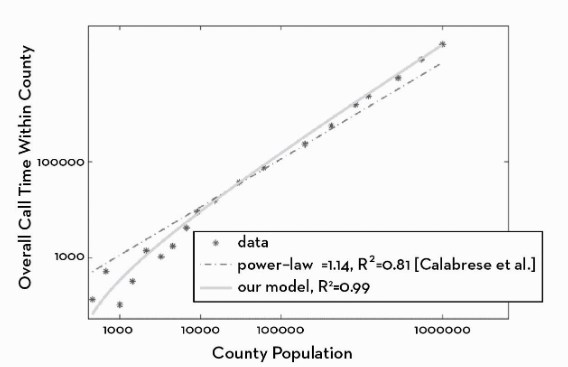same_person
same_person
theme: social_physics
theme: social_physics
Social Physics
2014

Figure 15. The density of social ties accurately predicts both telephone calling patterns and the rate of HIV/AIDS cases.
(Pentland, 2014, p.176)Indeed, the celebratory promises of big data as \“good enough\” to produce predictors of social behavior fundamentally ignore a key insight of social theory: Aggregated, individual actions cannot, in and of themselves, illustrate the complicated dynamics that produce social interaction— the whole of society is greater than the sum of its parts.
(Crawford et al., 2014)The engine that drives social physics is big data: the newly ubiquitous digital data now available about all aspects of human life. Social physics functions by analyzing patterns of human experience and idea exchange within the digital bread crumbs we all leave behind us as we move through the world—call records, credit card transactions, and GPS location fixes, among others. These data tell the story of everyday life by recording what each of us has chosen to do. And this is very different from what is put on Facebook; postings on Facebook are what people choose to tell each other, edited according to the standards of the day. Who we actually are is more accurately determined by where we spend our time and which things we buy, not just by what we say we do.
(Pentland, 2014, p.30)Pentland may be right that our behavior is determined largely by social norms and the influences of our peers, but what he fails to see is that those norms and influences are themselves shaped by history, politics, and economics, not to mention power and prejudice. People don’t have complete freedom in choosing their peer groups. Their choices are constrained by where they live, where they come from, how much money they have, and what they look like. A statistical model of society that ignores issues of class, that takes patterns of influence as givens rather than as historical contingencies, will tend to perpetuate existing social structures and dynamics. It will encourage us to optimize the status quo rather than challenge it.
(Carr, 2014)Pentland describes a series of experiments that he and his associates have been conducting in the private sector. They go into a business and give each employee an electronic ID card, called a \“sociometric badge,\” that hangs from the neck and communicates with the badges worn by colleagues. Incorporating microphones, location sensors, and accelerometers, the badges monitor where people go and whom they talk with, taking note of their tone of voice and even their body language. The devices are able to measure not only the chains of communication and influence within an organization but also \“personal energy levels\” and traits such as \“extraversion and empathy.\”
(Carr, 2014)Carr, N. (2014) The Limits of Social Engineering: A Review of Social Physics by Alex Pentland, MIT Technology Review, 16 April. [link]
Crawford, K., Miltner, K. and Gray, M. L. (2014) ‘Critiquing Big Data: Politics, Ethics, Epistemology’, International Journal of Communication, 8, pp. 1663–1672. [link]
Pentland, A. (2014) Social physics: how good ideas spread-the lessons from a new science. New York: The Penguin Press.
same_person
same_person
theme: social_physics
theme: social_physics